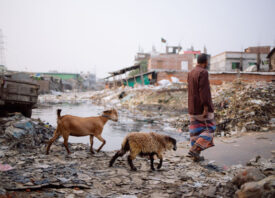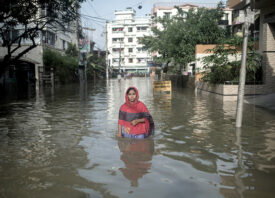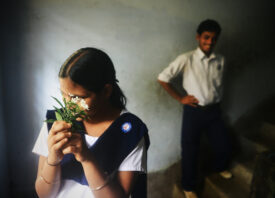Search this site
Shocking Photos of the Floods in West Bengal


The photographer Ranita Roy remembers the floods of West Bengal from her early childhood. “When I was a kid, I had a lot of fun with the flowing water,” she remembers. Now, as an adult, she realizes the consequences and implications of the floods. People and their animals have died, and more have lost their homes and livelihoods. Driven by what she calls her “inner instinct,” she felt she had to document the realities of what she saw.
Heavy rainfall, rising river levels, and run-off flooded the streets of West Bengal this summer, making headlines worldwide. Fifty people were killed. Roy, who is currently earning her Master’s Degree in Environmental Science, saw the situation firsthand. “It was a completely different feeling seeing with my own eyes what I had seen in the newspapers,” she tells me.
Farmers suffer a brunt of the devastation when the waters claim their crops. Roy spoke with local contacts in various areas to get an idea of the scope of the situation; in addition to the loss of personal land and possessions, the floods also halt public life. In some cases, schools and offices have been forced to close, and transportation has come to a halt. In Ghatal, Roy says, the households keep boats to help navigate the waters. Standing water also poses the risk of illness. “Places that face severe floods take months to resurrect,” the photographer explains.
Documenting the floods has come at a price for Roy. “The devastating effects of the floods on human settlements moved me,” she admits. “There are many [scenes] which I never forgot.” Still, she continues to tell the stories of these people from the perspective of someone who understands. These floods and the fears and the hopes of those in need are embedded in her memories, all the way back to the days when she used to play in the water as a little girl. And at the end of the day, she does find glimmers of hope. In moments of crisis, people lend a hand to one another. “I have seen many clubs from different areas of the state bring food, clothes, and medicine for the affected people,” she tells me. Visit Roy’s website for more.









All images © Ranita Roy



